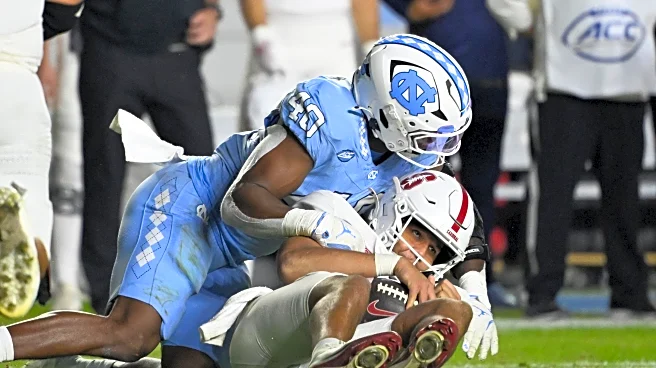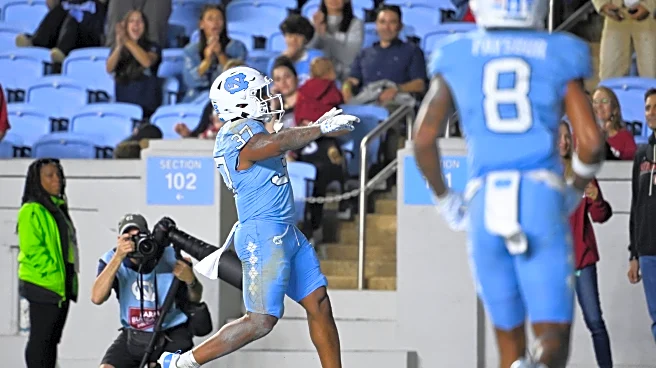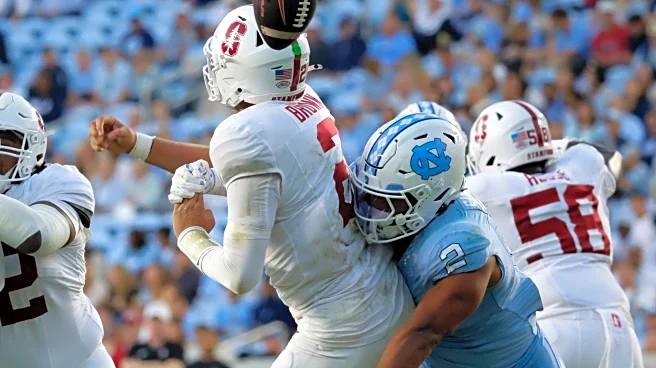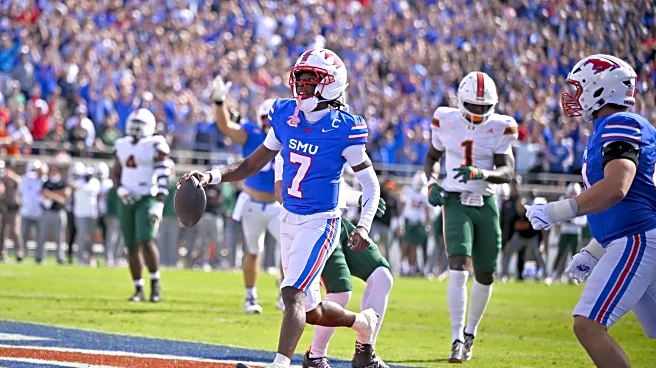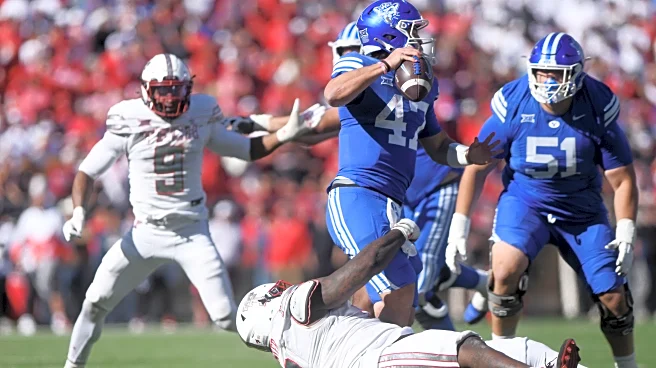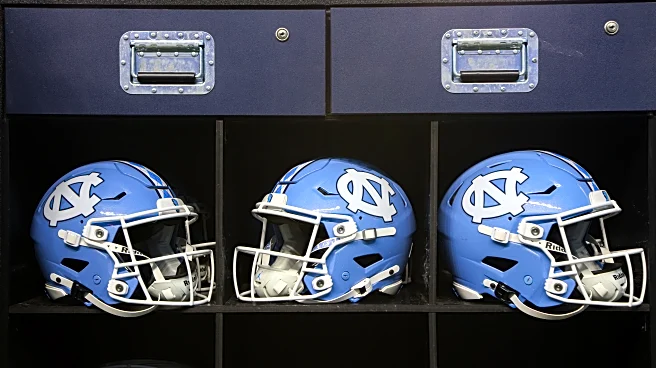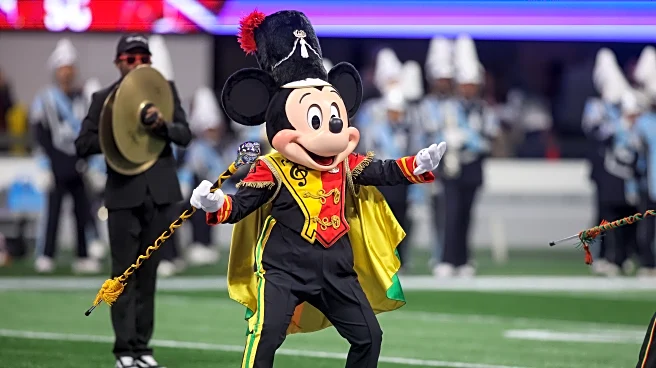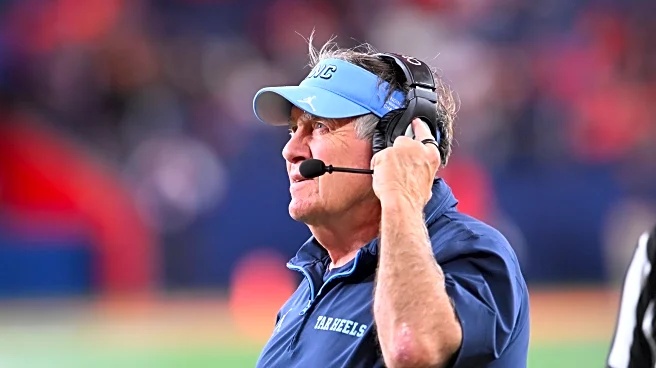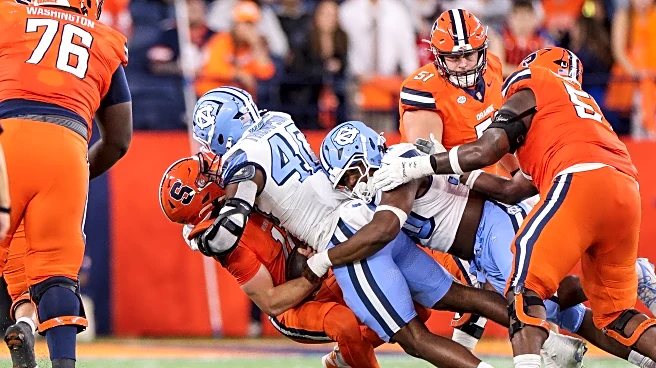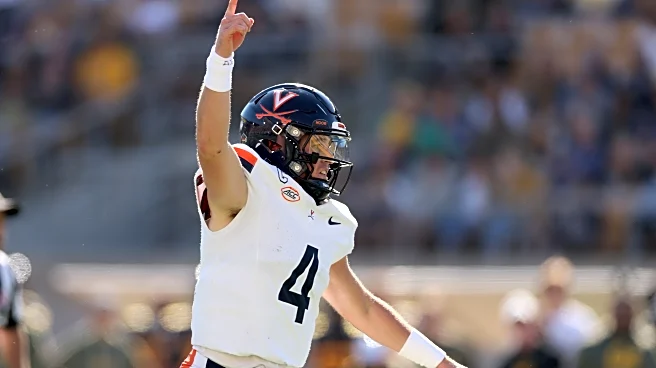Evaluating a football team always comes down to context. All wins are not As. All losses are not Fs. This exact result against Duke, final score and stats, would be a happier evaluation, certainly, but
it would also be much more complimentary. Fact: Stanford stinks. That fact must be taken into consideration. The fact that Stanford, which lost to Virginia by 28, SMU by 24, Miami by 35, and Pittsburgh by 15, had the ball at the end with a chance to win must be taken into consideration. The fact UNC was favored by 10 and needed a final drive stop to preserve the victory seems important to note.
UNC made plays to get the win. UNC made critical mistakes across multiple position groups to put Stanford in position to steal the game. UNC also benefitted from a couple of lucky breaks. All football teams, even great ones, experience good fortune on occasion. Misfortune contributed to a couple of Tar Heel losses this season, so perhaps we were due. Still, this team shouldn’t have been in position to need some breaks against Stanford.
Quarterback: D+
Gio Lopez, for whatever reason, frequently produces very different results one half to the next. Last night was no different.
First half: Gio led an offense that looked inept. Given the gift of a drive starting at the Stanford six yard line (by an Andrew Simpson strip sack), the offense went backwards and kicked a field goal. UNC failed to convert a single 3rd down in the first half, running only 18 plays to Stanford’s 40. The QB position looms largest in the red zone and on 3rd down, and Carolina’s QB did nothing in those moments in the first half. On top of that, a Lopez fumble gifted Stanford its own short field goal attempt, which fortunately missed.
Second half: Lopez ended the night with a stat line of 18-25 (72%) for 203 yards with two touchdowns and no interceptions. Almost all of that came after halftime, obviously. Gio made some nice throws and stood in against pressure to nail his two touchdown passes. Lopez also airmailed a potential touchdown pass to Kobe Paysour, who likely scores with an accurate throw. A throw from the near hash to the opposing sideline, into coverage, should have been an interception. Any Lopez throw downfield with more than 10 air yards remains an adventure.
Offensive Line: F
Stanford hurried Lopez six times and sacked him twice. The run game gained all of 67 yards on 27 attempts (the 17 sack yards reduce the box score total to 50). A struggling offense can’t endure self-inflicted wounds, and the offensive line contributed two false starts, an illegal man downfield, and two holding penalties in addition to poor run blocking and poor pass protection. Next.
Wide Receivers: C
Jordan Shipp had a 55 yard TD catch! That’s great, but he also contributed an offsides (inexcusable for a wide receiver), a false start, and a holding penalty, deductions lowering this grade from a B to a C. Paysour didn’t score, but he converted a couple of key 3rd downs. Kobe also drew an important defensive pass interference penalty to get UNC out of the shadow of his own goal when both coaches were still playing for field position.
Running Backs: B
Davion Gause turned 14 touches into 79 yards and UNC’s first touchdown with a beautiful catch over his back shoulder. Demon June, after blowing up Syracuse last weekend, only touched the ball three times for four yards (see: coaching). Gause’s contributions were game-changing. Any further concerns or questions about running backs in this game need to be directed to Freddie Kitchens.
Defensive Line: A
Four sacks and two tackles for loss. That’ll do. Stanford’s Micah Ford rushed for 68 yards on 17 carries, especially effective on 3rd down in the first half, when Stanford converted six of their nine 3rd downs to carry a massive time of possession advantage into halftime. In a game in which Stanford wanted to drain clock and shorten the game, that could have been crucial. Still: four sacks and two TFLs, with Stanford’s QB clearly feeling their presence and rushing his throws, were crucial to the outcome. Melkart Abou-Jaoude continues to single-handedly wreck offensive game plans, and his running mates along the line of scrimmage continue to free UNC’s linebackers to make play after play.
Linebackers: A-
Why not an A? The aforementioned success of Ford in the first half on first viewing seemed to fall more on the linebackers than the defensive line. One of Ford’s successful 3rd down conversions included running over Khmori House to get that extra yard. Ford also got free for a couple of explosive pass plays. That said, the linebackers forced two Stanford turnovers, a fumble by Simpson and an interception by House. Thompson and Simpson logged five sacks of their own. A Stanford offense that could do nothing most of the game (more on that with coaching) simply had no answers up front for Carolina’s front seven.
Defensive Backs: C
When Brown wasn’t getting sacked or running for his life, he completed passes. Stanford converted 16 first downs via the pass, generating 284 yards through the air. Caden High and CJ Williams did most of the damage, amassing 161 yards and a touchdown on 16 catches. Most of that came late, when UNC seemed to go a bit more conservative with their front seven, forcing the secondary to cover for slightly longer periods of time.
Special Teams: B
A special teams miscue could have proven costly, and UNC’s special teams were clean all night. Jonathan Amugadu blasted a Stanford kick returner on the 16 yard line, drawing a huge roar from a meager crowd. A Verhoff 48-yard field goal in the 4th quarter proved crucial to the final accounting. Maginness averaged 42.3 yards on six punts, twice pinning Stanford inside its own 20, an important contribution in a game where two grizzled former NFL coaches spent most of the game playing for field position.
Coaching: D
The offense did nothing in the first half, keeping Stanford in the game. The defense shifted tactics late against Stanford, allowing the Cardinal to score two late touchdowns and get the ball back with a chance to win the game. The team drew 11 penalties for 73 yards, almost all of them due to a lack of focus and discipline rather than aggression. Stanford played the game it needed to play to have a chance to win as a 10 point underdog, and UNC did little to force them out of their game plan.
The next three weeks feature rivals considerably superior to Syracuse and Stanford. An offense that doesn’t show up until the second half won’t cut it. A defense that gets carved up when the front seven can’t get pressure won’t cut it. 11 penalties of the false start and holding variety won’t cut it.
Wins that provide a lot of teachable moments can be good things. Hopefully the coaches and players have a better week of practice and prepare for Wake Forest better than they apparently did for Stanford.
